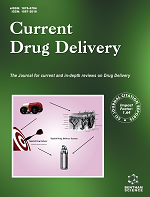
Full text loading...
We use cookies to track usage and preferences.I Understand

The development of nanotechnology-based drug delivery systems has been extensively investigated across various therapies, leading to the creation of numerous nanomedicines for clinical use. However, these nanomedicines have yet to achieve the anticipated therapeutic efficacy in clinical settings, highlighting the urgent need for further research in this area. A primary challenge in nanomedicine research lies in ensuring that nanoparticles and therapeutic agents can effectively penetrate and accumulate within tumors. The enhanced permeability and retention (EPR) effect has been previously explored as a means to enhance drug delivery to tumors, but recent findings have revealed its limitations, including variable responses, restricted penetration, clearance by the reticuloendothelial system, and non-specific accumulation. As an alternative approach, transcytosis has been explored for delivering drugs to specific organs or tissues, potentially bypassing some of the constraints of the EPR effect. For example, nanoparticles can be guided through barriers by targeting specific receptors on cell surfaces or by utilizing a different charge compared to tumor cells' surfaces. Therefore, this article explores transcytosis, including adsorptive, receptor-mediated, and cell-mediated subtypes, all of which have demonstrated promising results and offer potential solutions to enhance the effectiveness of nanomedicine delivery for cancer therapy.

Article metrics loading...

Full text loading...
References


Data & Media loading...